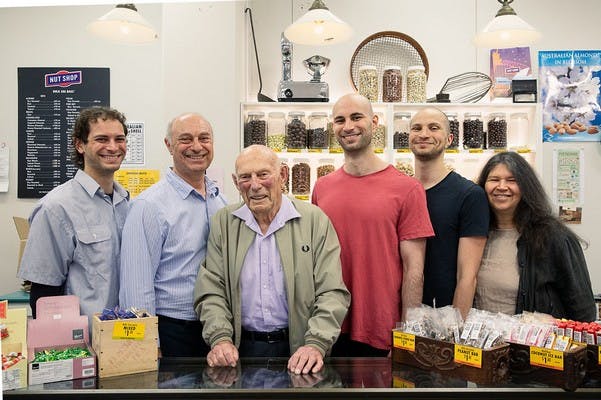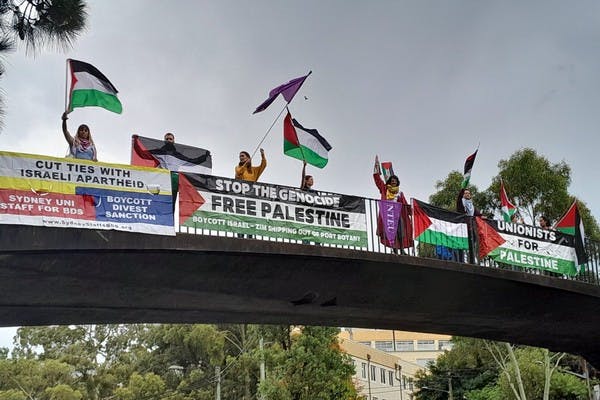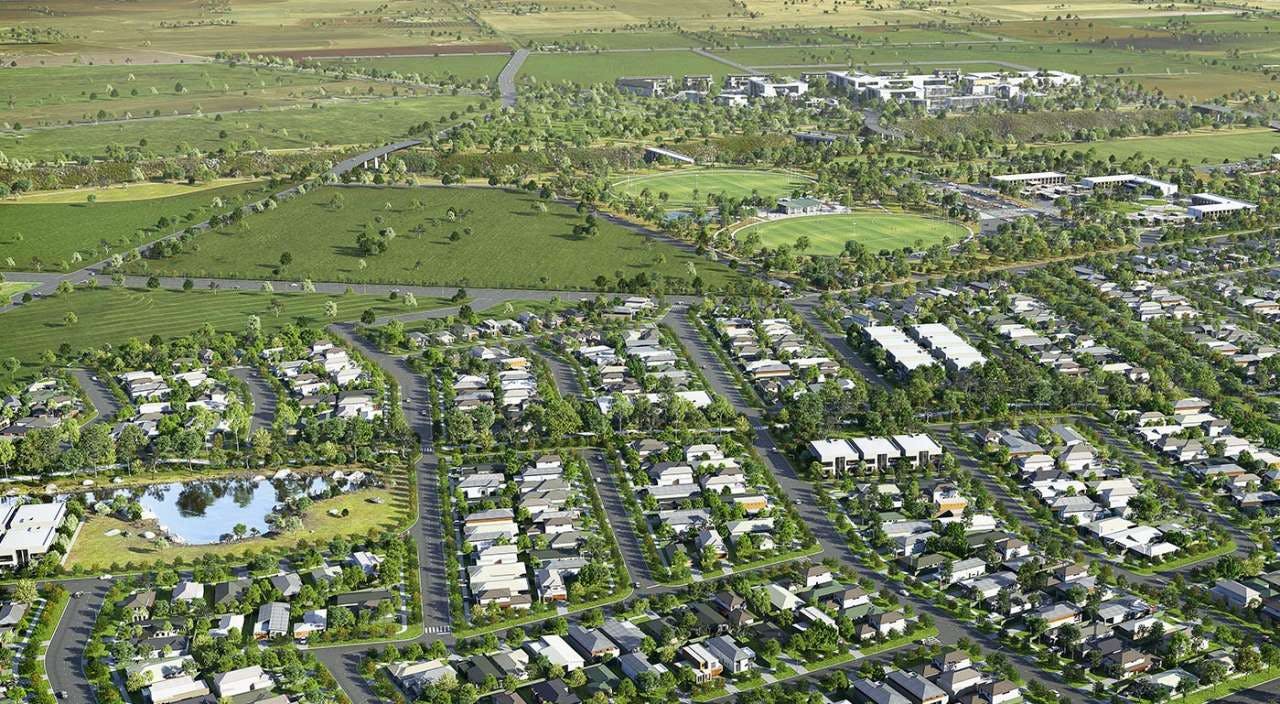Published: 12 December 2023
Last updated: 5 March 2024
The Mendels family has run the Nut Shop for four generations. AVIVA LOWY steps into confectionary heaven to find out the secrets of their success.
Almost every inch of space in the tiny chocolate box of a shop in Sydney’s historic Strand Arcade is crammed with dried and glace fruits, confectionary, and nuts - raw, roasted, spiced, blanched, dipped in couverture and butterscotch, or, should you want, freshly ground.
It’s a surprise that there’s any room left for the staff and loyal customers of The Nut Shop, a city icon which has existed in the very same spot for 85 years, run by four generations of the one family, the Mendels.
But The Nut Shop dynasty almost didn’t happen. Only two days in 1939 made the difference between the family escaping Nazi Germany for Australia instead of the US.
“My mother’s family are all in America and she wanted to go there,” says Paul Mendels, still active in the business at the age of 96. But his father, Karl, had a brother who’d made his way to Sydney after the Nurmeberg laws enacted in 1935 deprived him of his job in a large Berlin department store.
Paul’s uncle sent the family a landing permit for Australia which arrived two days before the desired papers for America. “Even though we knew they were coming by airmail, we did not wait because of what happened on Kristallnacht.”
Luckily, his father was away that fateful night, travelling for work. “He was a cattle trader, one of the things Jews could do”, and he was warned to stay away for a few days. When he did return, he was thrown into jail. “He could only come out when he had a visa.” Hence the urgency to accept the first lifeline offered.
it was difficult for my parents to get jobs. My father first worked as an assistant to a removalist.
“I was 10 when Kristallnacht happened and it was the most horrific day of my life.”
“We arrived (in Australia) in April 1939 and it was difficult for my parents to get jobs. My father first worked as an assistant to a removalist. You took anything you could get and learnt a bit of English,” he says. Before the year was out, his father had bought the little nut shop. It had only recently been established by another German refugee, who soon found the physical work too hard and decided to sell.
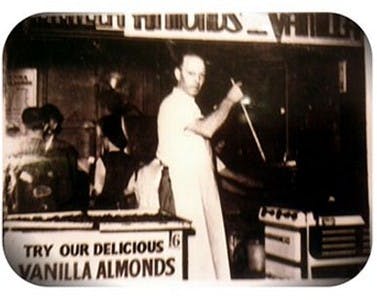
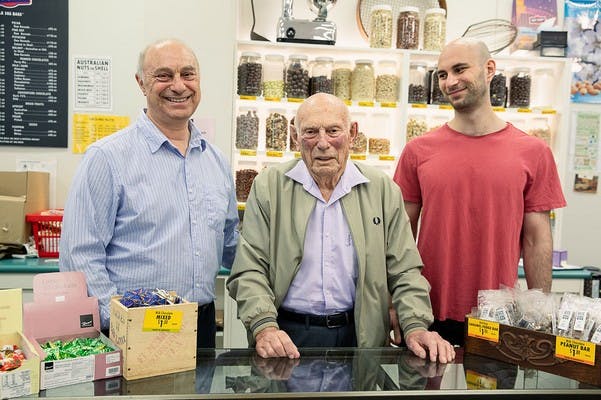
Unlike today’s cornucopia of over 200 different items, the store only made a few lines. “Mainly candied almonds and other nuts in some sort of coating. Originally our manufacturing was done in the tiny shop - a stove in the window where we cooked and a window where we cooled and separated. People could actually see the nuts being cooked and that’s what they wanted. Not the ones that were done half an hour ago,” laughs Paul.
By far the most popular were the Vienna almonds. During the war, they had to be called vanilla almonds, and they were rationed because of the difficulty in obtaining almonds and sugar: a quarter of a pound per person and half a pound for those in uniform.
From the age of 13, Paul helped out in the shop after school and on Saturdays, joining the business full-time after doing his Leaving Certificate. The shop hadn’t changed much since it started and he could see huge potential. Taking himself off to America to do a confectionary course, he learned to make caramels through nougats and marshmallows. On his return he introduced such things as marzipan, brandied prunes and chocolate orange peel.
During the war, Vienna almonds were rationed because it was difficult to obtain almonds and sugar:
Soon the shop was too small for both manufacturing and retail. Fortunately, spaces in The Strand had become vacant as a lot of people left their businesses fearing the Japanese were coming to Sydney. “We had two rather large rooms. One where we did the cooking, and another for chocolate with refrigerators for cooling.
“Then we built a factory in Surry Hills in the late 50s, early 60s, from scratch. It lasted quite a time and then we built a second one (in Alexandria in the late 90’s), both custom built for confectionery.”
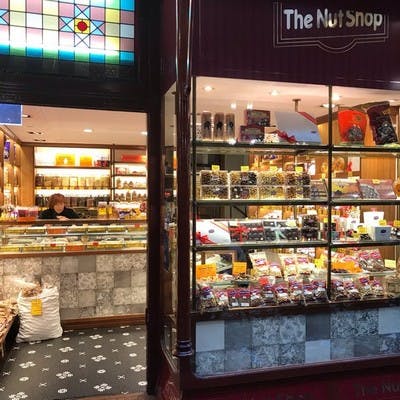
In the early years, on one of his regular trips to America for the Retail Confectioners convention, Paul and his wife went to sit with a Japanese couple who looked lonely. “Turns out he’s a multi-millionaire and he owned Hawaiian Host (makers of chocolate covered macadamias). He had the same chocolate machine that we had and they were making clusters which were selling like mad. I thought, we can do that.”
The initial hurdle he faced was that there were no macadamias available in Australia. Though native to this country, the trees were only being grown around banana plantations as a windbreak. They were taken to Hawaii in the 1890s for the same purpose but the Hawaiians had discovered they were good to eat too.
“At first, I imported them and then thought, how crazy. Why can’t we grow them?” Finally, Paul saw an ad in the newspaper for a 60-acre macadamia lot in Dunoon in northern NSW (now the macadamia capital of Australia) and he bought the farm with some partners.
Paul was keen for a harvest, but many people were investing in macadamia farms only as a tax write off. “It was a racket. Everything was tax deductible.”
Paul is proud of the fact that “we were the first ones to sell them commercially”. These days, the farm produces around 30-40 tonnes annually, though the recent Lismore floods saw that yield reduced significantly.
As well as expanding production they were opening retail outlets and had nine shops at one point. “My wife was the relief girl. If someone was away on holidays or sick, she went to all these different shops. She said, ‘I’ll give you three months and I’m out.’ So I sold the shops,” says Paul. Today there is only the original in the Strand and the factory shop.
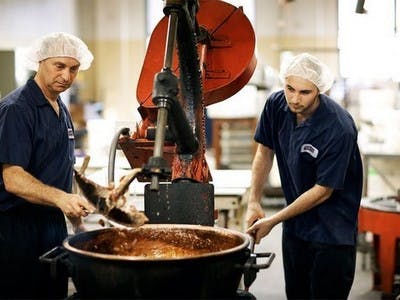
Their son Dan, who joined the business in 1986, remembers that time well. “I was a latch-key kid until she said, 'I’ve had enough of this',” he laughs.
When I visit him at the factory in the run-up to the festive season, it’s frantic. Even as a kid, Dan used to help out in the Strand at Christmas. He’d be upstairs in the storeroom and “people were yelling from downstairs, send me another tin of Vienna almonds,” which he’d rush down.
Dan takes me on a walk around the factory which they built within the shell of a large warehouse. “Turning the space into a functioning food factory was a big issue”, says Dan, who was a practising architect before joining the business.
Dan’s sister Vicki and her husband Richard had come on board a year earlier after returning from their honeymoon. Paul had said to them, “It’s so close to Christmas, why don’t you help me out”. And they stayed on for over 30 years. These days, Dan and his wife Jackie are the owners with Paul.
When we enter the cool room where nuts are tumbled or drizzled in chocolate, the smell is irresistible. “We blend our own chocolate which we buy from the big manufacturers. Our dark chocolate is a 73% blend. Our milk chocolate is a nice creamy blend”, says Dan.
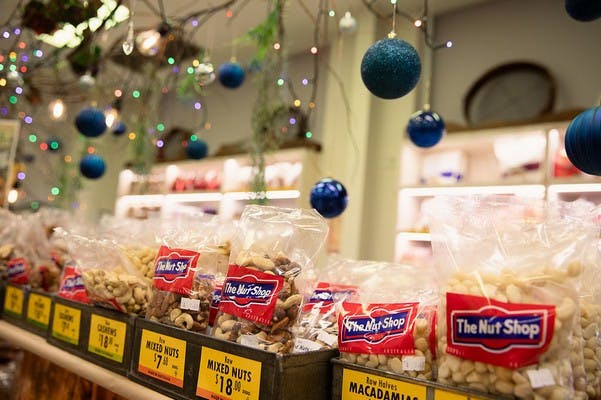
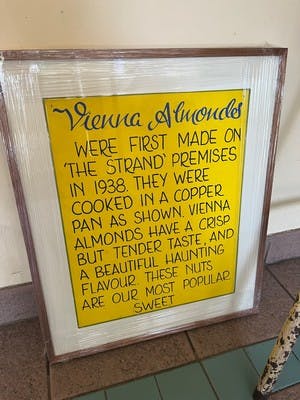
We find Dan’s oldest son, Martin, preparing by hand the marzipan filling which will be enrobed in dark chocolate. He joined five years ago, making it three generations of Mendels working side by side. Another son Zac has since also joined the family team.
Stacked in the storeroom are the large bags and boxes of raw nuts. “We really like good stuff and, where possible, Australian. The pecans are all grown in NSW, pistachios in South Australia,” says Dan. The macadamias they produce themselves or source from nearby farms, and all peanuts and almonds are Australian.
As well as buying local, Dan is interested in unusual almond varieties. He visits the farmers every year to encourage them to keep growing these heritage style nuts.
So what are the most popular nuts these days? “Vienna almonds are still the ones they come to us for. And we do a lot of cinnamon almonds and caramelised macadamias.”
Near the end of my visit, Dan shares an old joke with me. Perhaps it’s one that dates back to his grandfather Karl and the start of this family odyssey.
If you are a doctor and you make a mistake, then someone might die.
If you are a lawyer and you make a mistake, then someone might go to prison.
But if you make chocolates and you make a mistake, you eat it!
All photos by Giselle Haber unless otherwise credited
